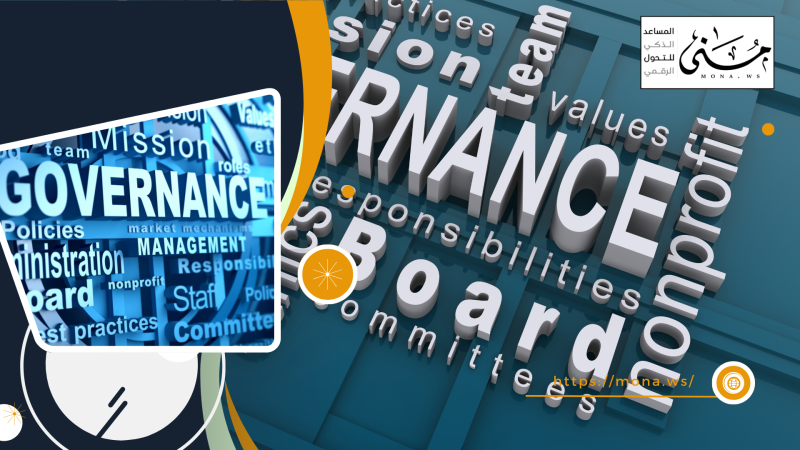Have You Ever Wondered Why Some Organizations Execute Their Strategies Smoothly While Others Struggle Despite Having the Same Resources?
The organizational structure is no longer just an organizational chart of positions and lines of authority. It has become the DNA of the organization — the vital system that defines how information flows, how decisions are made, and how strategies are turned into action. It forms the internal framework of the enterprise — not as an end in itself, but as a strategic tool to achieve the goals for which the organization was established.
When the structure aligns with the vision and plan, the organization moves harmoniously toward its objectives. But when it is fragmented or misaligned, it can become a barrier that slows progress and scatters efforts. Read on to discover how the organizational structure forms the true foundation for effective and sustainable institutional performance.
The Invisible Cost of a Flawed Structure
No organization can operate at full capacity if its structure is defective. A flawed structure imposes a costly “invisible tax” paid daily in the form of wasted time, lost opportunities, and reduced productivity. Symptoms of this dysfunction manifest in several ways:
-
Human Cost: The first victims of a poor organizational structure are the employees. The lack of a clear structure leads to a “sense of confusion and instability.” A study showed that 84% of employees agreed that morale declines when they don't know their exact place in the organizational map. The situation worsens with overlapping responsibilities and conflicting demands from different units, leading to burnout and increased internal friction.
-
Operational Paralysis: A major symptom of an ineffective structure is “slow decision-making,” as vital information is delayed due to lengthy or complex hierarchies. Lack of clarity also leads to “task duplication,” which 78% of employees confirmed in a study — wasting resources and increasing operational costs, especially in administrative areas.
-
Strategic Chokehold: Perhaps the most dangerous impact is how a bad structure can stifle the organization’s ambitions. Rigid structures “fail to creatively respond to new developments” and smother innovation. For example, while functional structures are efficient, they often create isolated “silos” that hinder cross-functional communication and collaboration needed to generate new ideas.
Choosing the Right Structure: A Strategic Balance
There is no one-size-fits-all organizational structure; the optimal choice depends entirely on the organization’s strategy, size, and environment. It’s a delicate balance of pros and cons inherent in each model.
-
Functional Structure:
The most common model where the organization is divided by specializations (marketing, finance, operations). Its strength lies in fostering deep expertise and efficient supervision within departments. Its drawback is creating silos that limit cross-functional communication and innovation, with employees prioritizing departmental over institutional goals. -
Divisional Structure:
Organizes the company around semi-autonomous units (by product, geography, or customer), allowing high focus and responsiveness to market needs. However, it can lead to duplication of resources and higher costs, as each division may have its own support functions, complicating unified policy enforcement. -
Matrix Structure:
A hybrid model combining functional and project structures, where employees report to both a functional and a project manager. It offers high flexibility and promotes innovation by pooling expertise from multiple functions. But it violates the principle of “unity of command,” potentially causing confusion and power struggles if not managed carefully. -
Modern Structures (Flat & Networked):
Flat structures aim to accelerate decision-making by minimizing management layers — ideal for startups that value empowerment. Networked structures focus on core competencies and outsource the rest, offering maximum flexibility and lower costs, but less direct control over operational quality.
The right choice is always the result of strategic alignment. A large industrial company seeking efficiency may favor a functional structure, while a tech startup aiming for innovation might prefer a flat or matrix structure. It’s a conscious selection of advantages that serve the strategy, with readiness to manage the inherent drawbacks.
From Vision to Reality: Design and Implementation
Designing the structure is not about rearranging boxes on a chart — it is a systematic strategic process that starts from future goals, not the current status.
-
Start with Strategy:
The process should begin by clearly defining strategic objectives through a comprehensive analysis of the internal and external environment (e.g., SWOT analysis). The structure is a tool to achieve these goals. -
Analyze Influencing Factors:
Consider the organization’s size, culture, available technology, and competitive environment. What works for a small company might fail in a large enterprise. -
Design the Structure and Define Roles:
Based on the above, select the most appropriate structural model, then develop functional maps, define organizational units, lines of authority, and accountability. -
Implementation and Change Management:
The biggest challenge is “internal resistance to change,” especially in legacy institutions. Overcoming it requires involving employees in the process, communicating transparently about the reasons and benefits of change, and providing training for new roles.
Clarity Tools: Job Descriptions and the RACI Matrix
Have you ever wondered why some organizations fail to align their structure with execution, despite having well-designed organizational charts?
The truth is: the structure alone — no matter how well-designed — is not enough. Even the best organizational designs can collapse upon first contact with reality if not supported by practical administrative tools that translate it into clear behaviors and completed tasks.
The structure is just the beginning. Real activation starts with tools that turn abstraction into practice and ambiguity into clarity. Among the most important tools:
-
Accurate Job Descriptions:
This document isn’t just a theoretical role description — it’s the bridge between structure and daily productivity. It outlines tasks, responsibilities, standards, and serves as the reference for recruitment, evaluation, and promotion. When employees know exactly what is expected, mistakes decrease, focus improves, and performance evaluations become fairer and more effective. -
RACI Matrix:
In multi-party projects and teams, authority gaps and overlaps appear easily. The RACI matrix is a critical tool to eliminate ambiguity and accelerate execution. It defines who is Responsible, Accountable, Consulted, and Informed. By defining these roles in advance, projects transform from arenas of invisible conflict into environments with clear tasks and streamlined decision-making.
Building an organizational structure without precise operational tools is like constructing a building without internal pillars. It may look solid on paper, but it's prone to collapse at the first real test. Therefore, combining clear structures with smart administrative tools is what differentiates organizations that merely plan from those that actually succeed.
Performance Measurement and Technology: The Modern Nervous System
The effectiveness of a structure can only be judged by tangible results. Leaders must go beyond impressions and rely on data — using KPIs to measure operational efficiency (e.g., project completion speed), employee satisfaction (e.g., turnover rate), customer experience (e.g., satisfaction index), and innovation capacity (e.g., time to market for new products).
In the digital age, technology guarantees the integrity of the organizational structure. Integrated platforms like DocSuite act as the organization’s operating system, linking structure to daily operations. They don’t just design organizational charts — they embed them into the core of work processes. For example:
-
Human Resource Management:
Supports the full employee lifecycle, from “talent recruitment” aligned with defined roles to “performance direction” and evaluation based on outlined responsibilities. -
Workflow Automation:
When a document requires approval, the built-in workflow engine automatically routes it through a series of approvals based on the predefined hierarchy — ensuring policies and procedures are not just text but executed with precision. -
Task Management and Accountability:
Assigns tasks to defined roles within the structure and tracks their completion status — linking them to transactions and correspondence to create a transparent, auditable record. -
Remote Work Enablement:
DocSuite functions as a digital headquarters — enabling employees to access documents, perform tasks, and collaborate regardless of location, making distributed structures viable and effective.
Thus, technology not only supports the structure — it safeguards its integrity, counters the natural drift toward informal workflows, and translates the organizational chart into executable code in daily operations.
In Conclusion
The organizational structure is not a one-time decision — it’s an ongoing strategic process that requires honest diagnosis, conscious design, consistent measurement, and unwavering commitment to adaptability. The successful organizations of the future are those that master the art of organizational design — not as a rigid science, but as a strategic capability to build and adapt structures that empower people, accelerate information flow, and achieve goals.
Leaders must invest in the digital tools that transform structure from a diagram on paper into a living, functional reality.
Your organizational structure is your future — make it flexible, adaptive, and always aligned with your ambitions.









Comments
Add New Comment